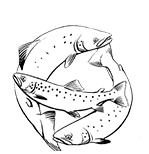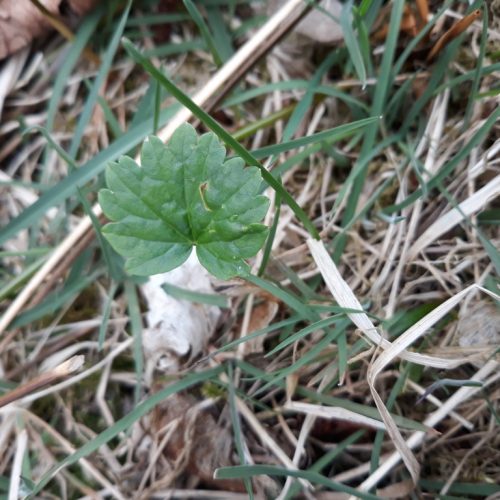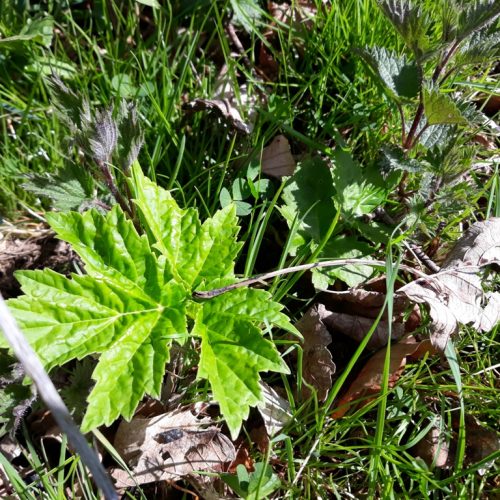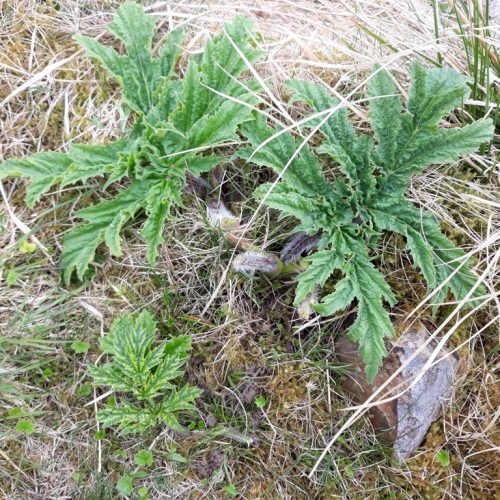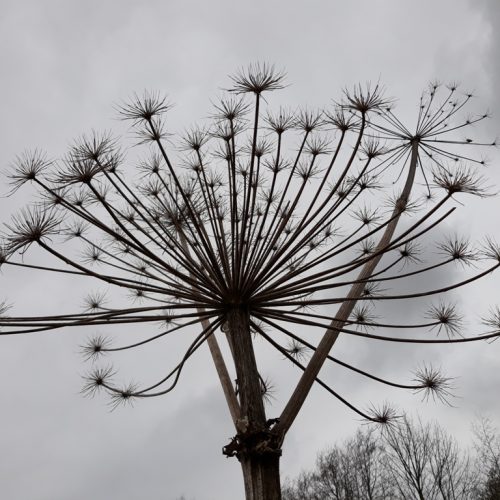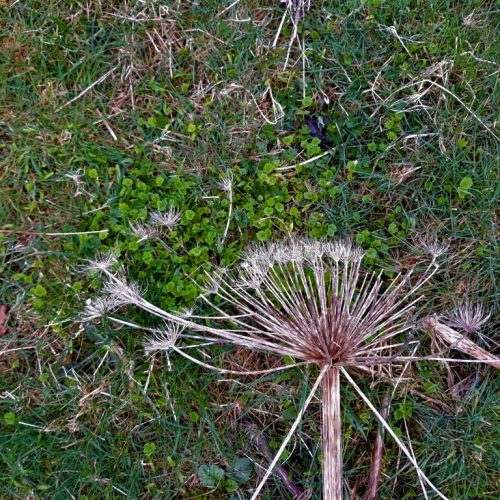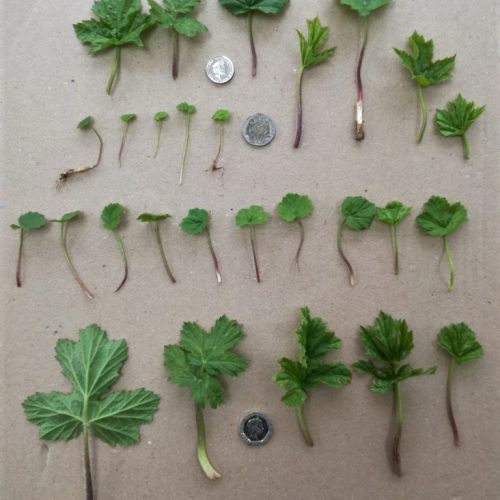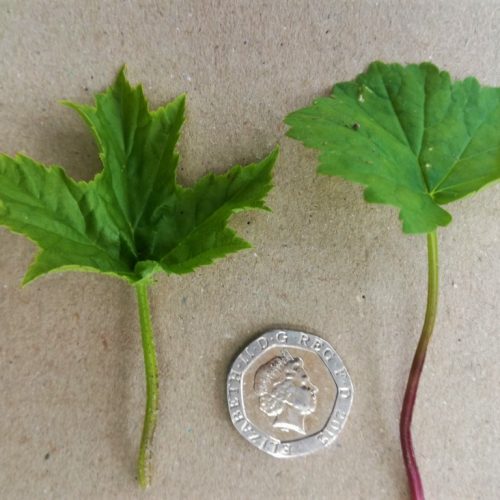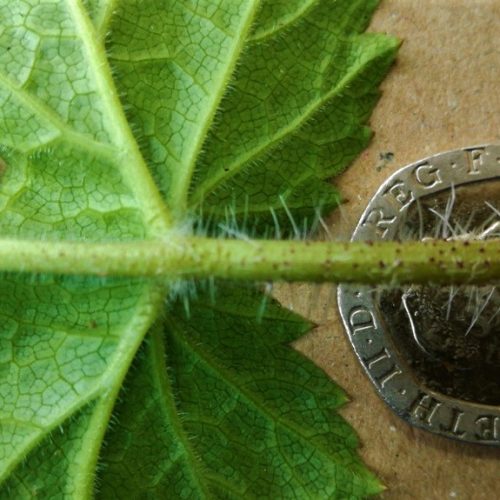Giant hogweed (Heracleum mantegazzianum) is a native of the Caucasus mountains and was introduced to Britain in 1893 as an ornamental plant. It escaped from gardens and now colonises many areas of wasteland and riverbanks throughout the UK. By the 1970s and ’80s the plant had colonised the majority of the Deveron catchment, which saw the local councils adopt an eradication scheme to control the species. By and large a great job was done and many heavy infestations were cleared allowing native wildlife to flourish once again. As the plants slowly disappeared so did the funding and the eradication scheme ceased.
The difficulty with Giant hogweed in the district is that each flower head produces several thousand seeds that are easily dispersed by water, so the plant spreads rapidly along watercourses. Project research has found that there is a huge seed bank held in suspension in the river Deveron and its tributaries and that these seeds can be preserved in clay sediments for many years.
Giant hogweed is a perennial plant, taking up to four years to mature and flower and, after going to seed, then dies. People tend to misjudge the native hogweed (Heracleum sphondylium) for the giant hogweed when walking close by watercourses as British hogweed is closely related to this foreign invader. There can be no mistake when scale is involved, however, as the giant hogweed has features that are over 300% larger than its native relative. The biosecurity threat posed by the species is that due to its size it suppresses the growth of native plants and grasses, leaving the river banks bare of vegetation in winter, increasing the risk of erosion and consequently silting up of valuable spawning grounds for wild salmon and trout.
Identifying Giant hogweed
Giant hogweed is closely related to the British hogweed and do share similarities in shape and colour.
In giant hogweed:
- The stem is green with dark red or purple blotches, is ribbed, has sharp bristles (especially at the leaf joints), and may be as thick as 10cm in mature plants.
- The leaves are sharply serrated and can grow up to 1 metre across and over 2 metres long.
- The flowers are white, the the flowering head (the umbel) can measure up to 80 cm across with 50 or more flower stems each comprising clusters of smaller flowers.
- Giant hogweed can grow in excess of 4 metres high and is most common alongside watercourses.
In regular hogweed:
- The stem is hairy all over and may have some purple blotches but is mostly green. The stem is much smaller and rarely gets more than a few centimetres across.
- The leaves are much smaller as well as more rounded, smoother and often with fine hairs on the upper side.
- Again, the flowers are white and form an umbel but there will not normally be more than 21 flower stems comprising the head.
- Hogweed usually grows to about 2 metres in height and is very common along roadsides – but is also found along riversides.
Both giant and regular hogweed can cause skin irritation so please take care around both.
Giant hogweed key features
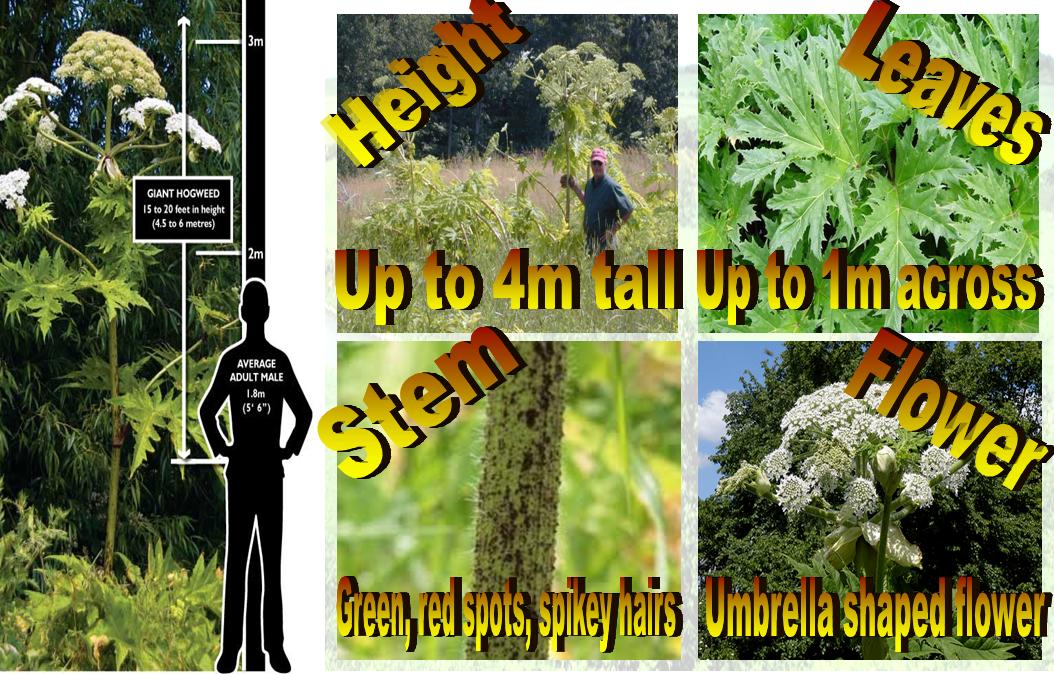
How to control
It is important that the plant is kept under control and even eradicated where possible. Using mechanical methods, the plant can be cut, mown or pulled and small infestations can be controlled by digging out the whole plant. Physical control should never be undertaken unless protective clothing is worn.
Each giant hogweed plant can produce up to 50 000 seeds and so cutting after flowering has no benefit once the seeds have formed. Furthermore, as hogweed seeds can remain dormant in the soil for a number of years, treatment is essential for successive years as new plants will continue to germinate in following years.
The plant can be controlled chemically and this method should only be considered after other practical methods have been ruled out. Properly used, the herbicide glyphosate (Roundup) is most effective. The plants may be sprayed with Glyphosate at a rate of 3.75 litres per hectare when growing actively but less than 1 metre tall, usually between April and May.
Be aware that prior agreement with SEPA must be obtained before a herbicide can be applied in or near water.
Beware of Giant hogweed…!
If the threat posed by the species to local biodiversity is not bad enough, there is also a huge health risk to think about. Giant hogweed contains furocoumarins chemicals which can cause phytophotodermatitis (plant-light-skin inflammation), a severe reaction from exposure to the sun after coming into contact with the sap.
This causes burns and blisters to appear two to three days after exposure. These blisters may last months with subsequent reaction occurring for up to 25 years, every time the affected area is exposed to sunlight where it may re-blister years after healing. Contact with the eyes can cause temporary and possibly permanent blindness.
Generally children are attracted by its size and hollow stems which they pick for telescopes or pea shooters. Children playing locally throughout the district are almost certain to come into contact with the plant at some stage as they pass it by. If you come into contact with Giant hogweed please seek medical advice as soon as possible.
Giant hogweed gallery
- Baby hogweed – still rounded leaves
- Young hogweed – spiky leaves
- Young hogweed (different sizes) – spiky leaves
- Giant hogweed – old seed head
- Giant hogweed – old seed head and new baby plants
- Variation in baby hogweed leaf shape, colour and size
- Two similar sized leaves with very different shapes. Notice the younger (rounded) leaf has the red stem more commonly found in the more developed plants
- The hollow hairs om stem and underside of leaf – one route the toxic sap can reach the skin.






